How to make a bird bath – inspiring DIY ideas for welcoming birds into your yard
Make use of simple, rustic materials to create something useful and beautiful for your garden birds
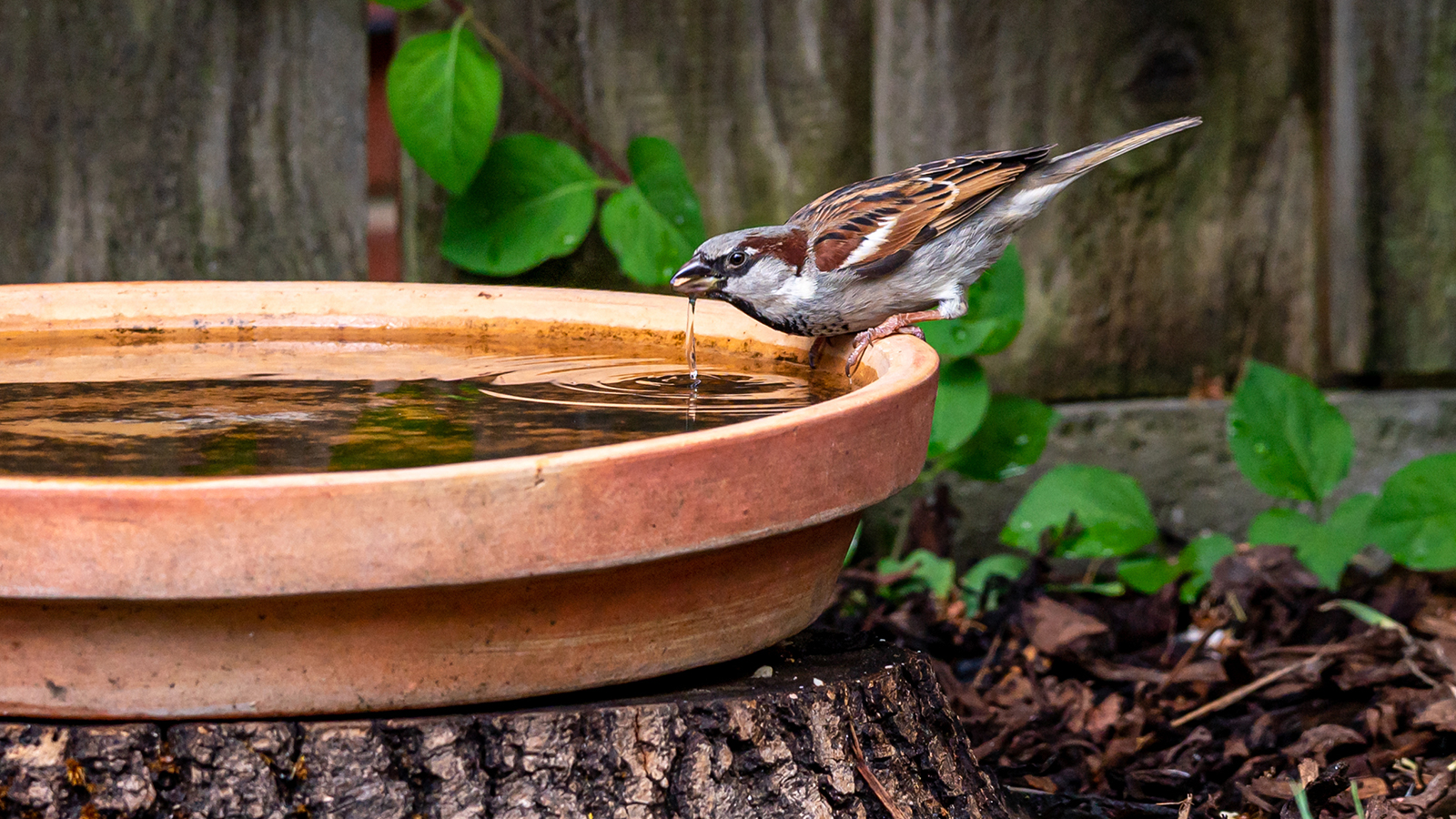

If you've been thinking about how to make a bird bath, chances are you're keen to encourage wildlife to your backyard.
Bird feeders are a welcoming invitation to feathered friends, along with safe spots to nest and take shelter in bad weather. But the simplest option to create yourself has to be the humble bird bath.
Whilst there are ornate bird bath ideas to shop for, if you're looking for a simple and sustainable DIY option, there are many creative ideas to explore for making your own.
With birds in mind, it's worth noting that more important than design is location, condition, and the way you look after your bird bath.

A ledge is an essential component to your homemade bird bath
Why learn how to make a bird bath?
So, why is including one or more bird baths in your garden so beneficial?
'Like all animals, birds require clean, fresh drinking water,' says wildlife science expert Alex Van der Walt.
This is vital all year round, particularly in winter. 'In winter, especially in areas which have cold climates, birds' water sources can freeze, making it difficult for them to get the water they require,' says Alex.
Design expertise in your inbox – from inspiring decorating ideas and beautiful celebrity homes to practical gardening advice and shopping round-ups.
'Wild birds expend much energy trying to melt snow and ice to obtain their water supply. Having a water source, and stopping a bird bath from freezing, can help them to save their energy,' she explains.
Bird baths are one of the best wildlife garden ideas you can include in your yard. Typically, they will either be at ground level or hanging from a height, but you can mount a DIY bird bath to your deck or garden wall too.

An author for Animals Around The Globe, Alex Van der Walt has a BSc in Animal Science and was a vet student with a lot of experience working closely with animals. She writes articles for those who share a love for wildlife and nature.
How to make a bird bath on the ground
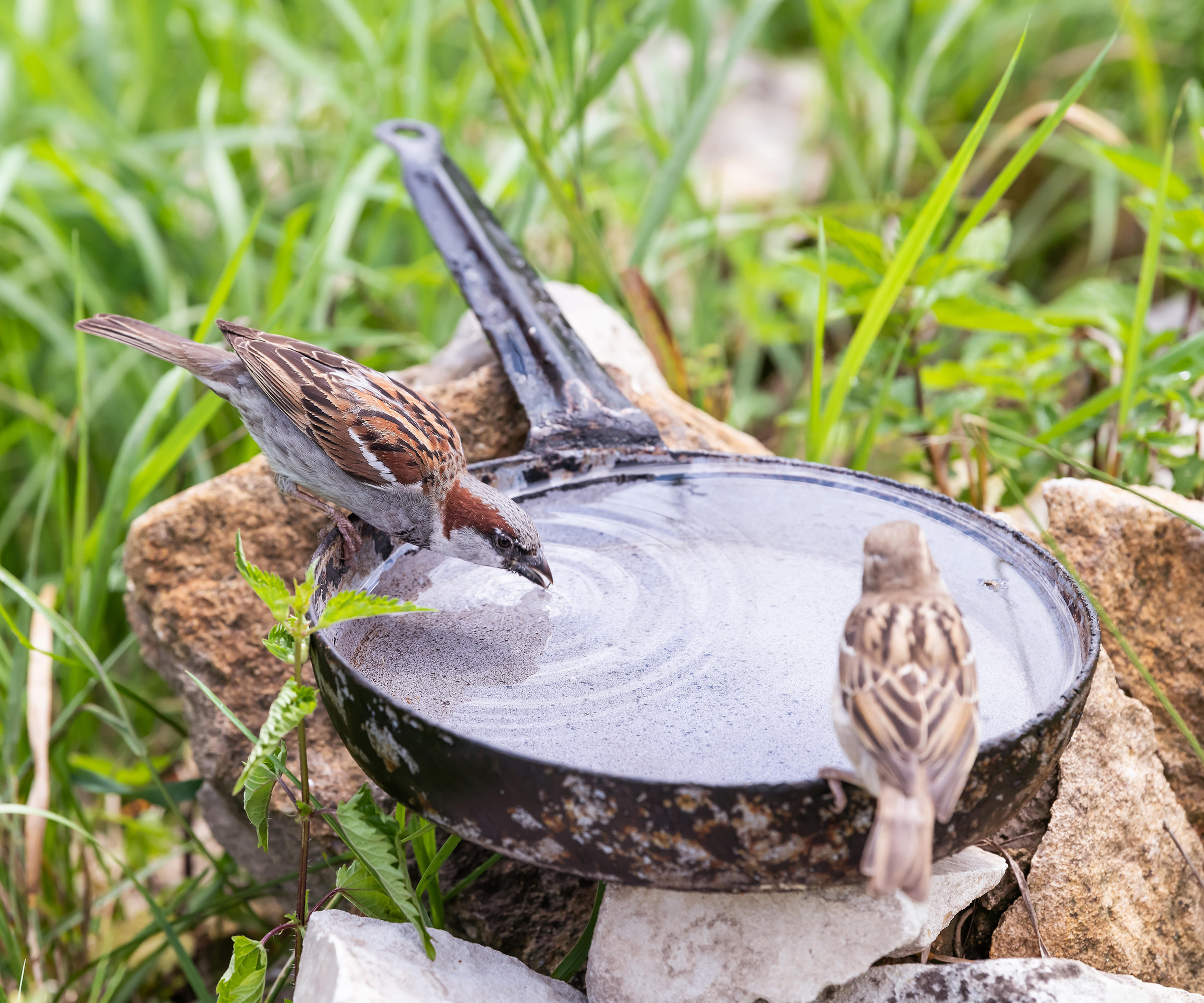
You can use a lot of household items to make a bird bath
You can use almost anything to make your bird bath (but do be mindful of avoiding common bird bath mistakes). It should be a sturdy, watertight container that's light enough to refill with ease and big enough to accommodate a few birds at once. Like this Bloem 12-in Terra Round Plastic Plant Saucer Tray at Walmart.
- A simple option is to use a plant pot saucer or simple bowl placed on a flat surface. You can also repurpose a number of different things: Butler sinks are a popular choice, as are rustic pans from the kitchen. Think about incorporating plants for birds in the surrounding garden too.
- One key thing you will need to consider is predators, as a bird bath placed directly on the ground can make birds more vulnerable. For a little elevation, put four bricks on the grass and balance a bowl in the center. This allows the birds to see 360˚ and to quickly escape if they sense danger. You can build up the number of bricks to raise it off the ground further.
- Keep it a minimum of 6ft away from shrubs or beneath trees though, as a ground-level bird bath increases the risk of attack from predators like cats. Bird baths can also be a prime target for snakes, so be sure to keep an eye out if you live in an area where that might be an issue.
- If you're in an area with lots of sun and heat, keep the bird bath in a lightly shaded spot and always out of direct sunlight. This will avoid water evaporating too quickly. The same advice applies when choosing a location for a bird house, too.
How to make a hanging bird bath
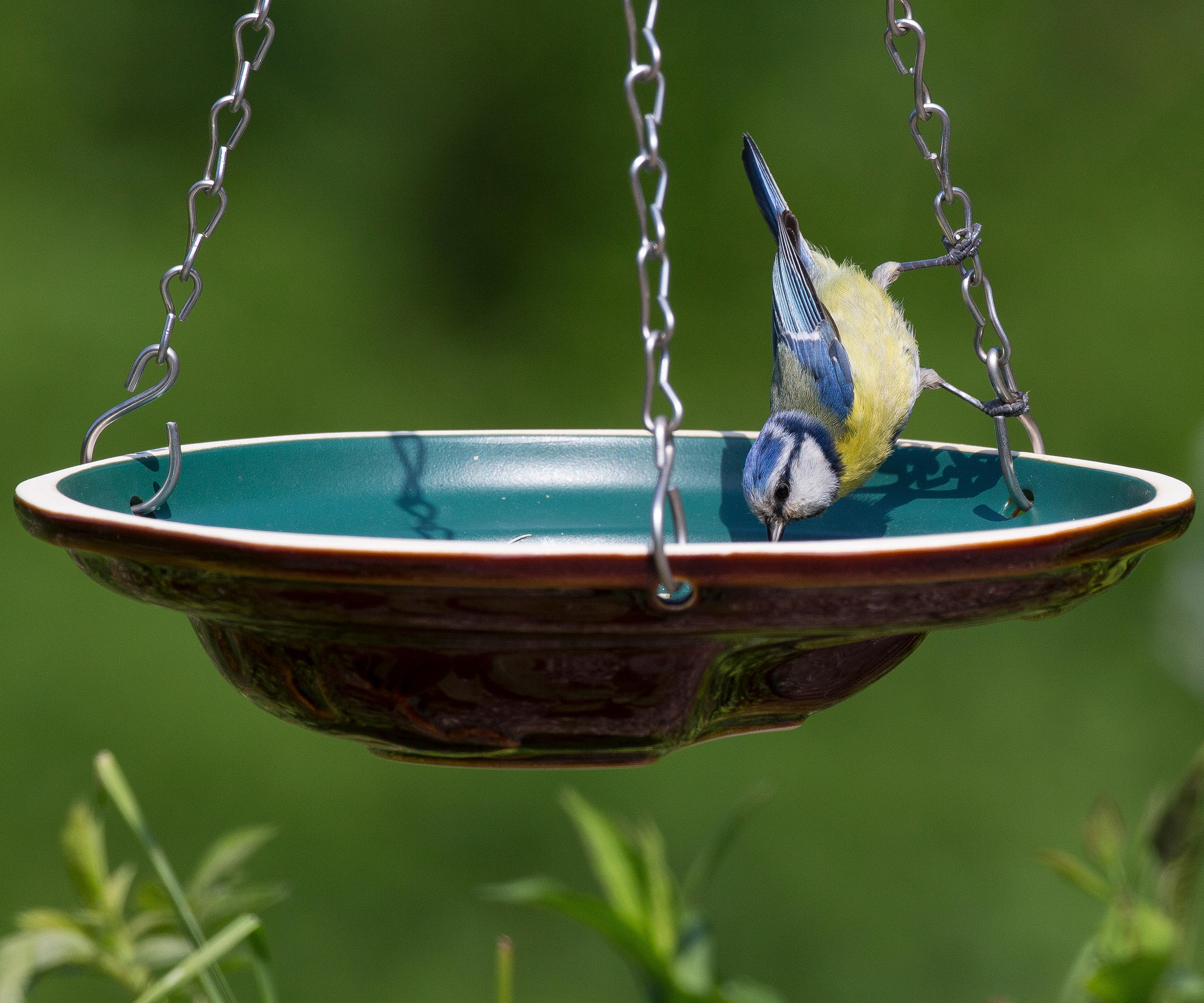
A hanging bird bath provides good grip for perching claws
Where possible, it's better to elevate your bird bath, keeping it out of harm's way from cats and other predators. Placing your bird bath at a height of around 3ft means it will be easily visible from the sky, but still accessible for hopping birds.
Keep it out of direct sunlight, and place it somewhere that's easy to refill. You can follow this simple method to create an easy DIY hanging bird bath:
- Take a basic basin or bowl and drill four equally spaced holes around the top.
- Cut a length of chain or strong rope into four sections of equal length.
- Attach each chain to the drilled holes with metal hooks.
- Hang it from a sturdy tree branch or pole.
- Check it remains level once filled with water, and adjust the length of the chains accordingly if it doesn't.
- Hang a bird feeder nearby so birds can feed and drink in the same location.
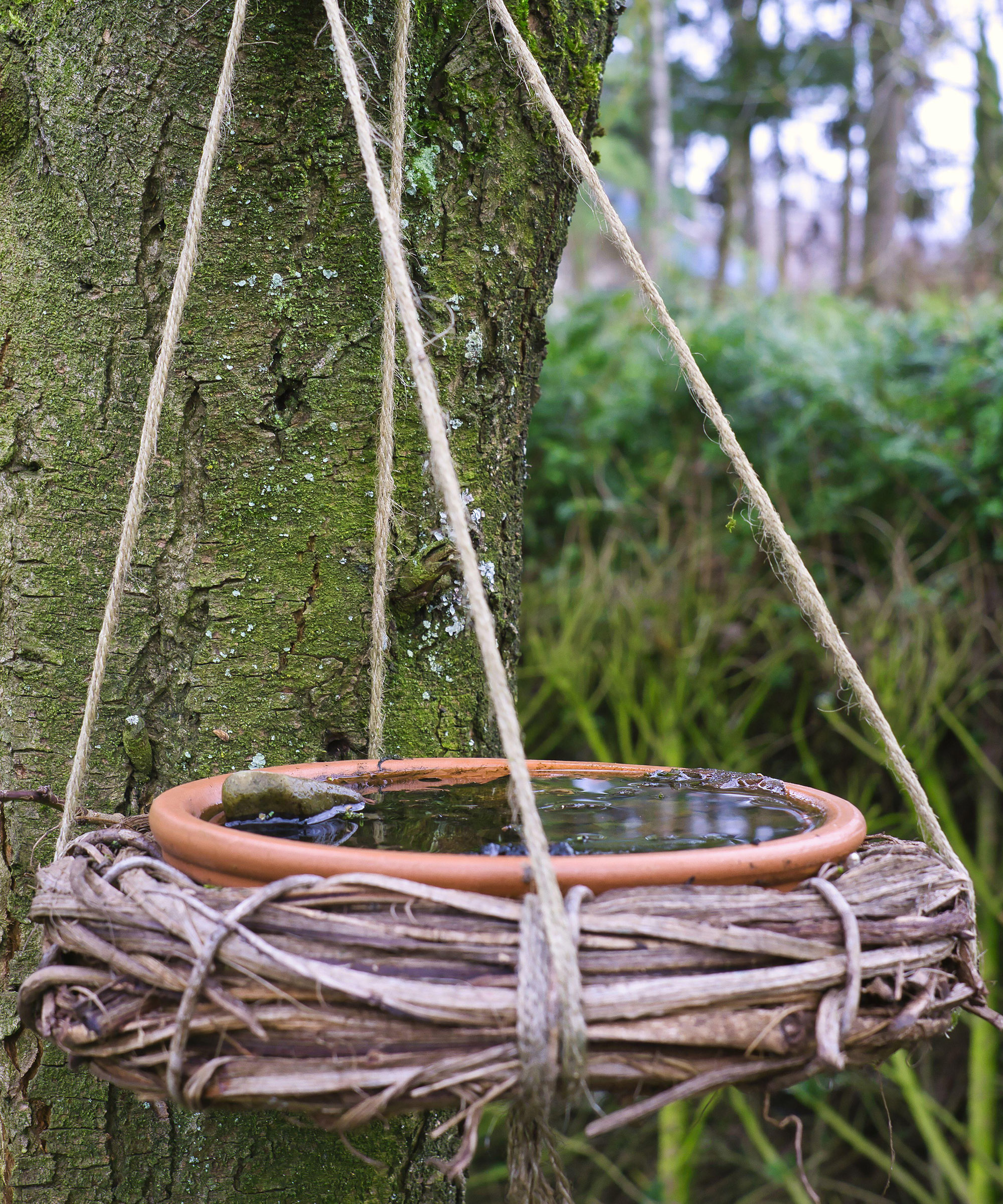
A bird bath hung at 3ft from the ground is a perfect height for bird visitors
If you want to provide extra protection for your bird bath, you can create a simple wooden frame for it. This works best if you have a square or rectangular bird bath or container rather than a circular design.
Simply measure your water dish, then make a frame using offcuts of wood that are all the same length for a square design, or two long and two shorter ones for a rectangular dish, making sure the dish will fit within the frame tightly.
Once your frame is assembled, drill four holes an inch or so in from each corner and attach a loop of rope, before hanging from a tree or pole as above. Finally, slot the dish in place and fill with water.
To provide some extra weight to your hanging bird bath, you could also add a heavy stone in the center of the dish. Think about placing some natural bird feeders nearby so feathered friends can refuel whilst taking a drink.
What materials can I use for making a DIY bird bath?
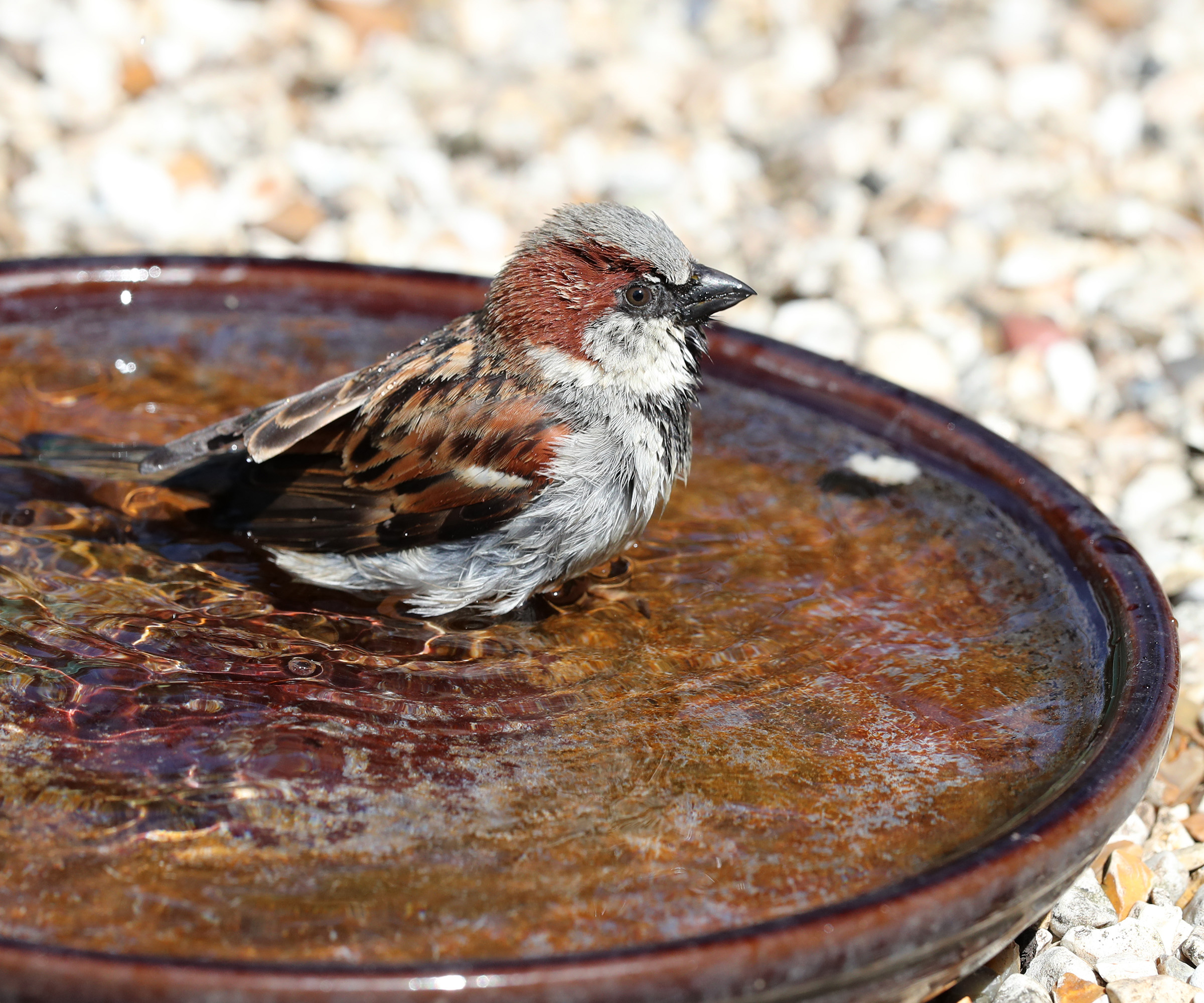
Birds will happily use a bird bath to quench their thirst
Making your own bird bath means considering materials. Birds will freely drink from, or bathe in a lot of different containers, such as plastic boxes, shallow bowls, old pans or even terracotta plant saucers.
Ideally, you need to make sure your chosen bird bath container meets the following requirements:
- Easy-grip surface: The surface of the bird bath should be rough, so that the birds can grip it with their claws. If your material does have a slippery surface, such as plastic containers, you can always add a thin layer of gravel to the base and a shallow stone in the middle.
- Sloping sides: It's a good idea to make sure the bird bath has shallow sloping sides so birds of different sizes all have access, with the water at up to 4in at its deepest.
- Somewhere to perch: You need to provide something for them to perch on. If it's a rather large bird bath, you can put some stones at the base which will give them better footing, and make them feel less vulnerable whilst bathing.
- Size: If you're lucky, your bird bath could become a regular washing area for flocks of birds. In this case, it needs to be big enough to handle multiple flapping wings splashing all the water out. As part of your bird bath winter care you'll need to keep it defrosted and topped up.
- Stability: Place your bird bath somewhere sturdy where the water won't spill.
FAQs
Why do birds avoid my bird bath?
There are a few reasons why birds will avoid a bird bath. The location might be too far from any easily-accessible cover, the water is too deep, or the edges don't provide sufficient grip for perching. You can place rocks inside a bird bath to offer more perching spots.
If you're interested in nature, think about making features like bird baths and bird houses more prominent when you're planning a garden.

Freelance writer and author Flora Baker is a keen amateur gardener and houseplant enthusiast. Her small garden in South London is a constant work in progress as she gets to grips with snail prevention, DIY trellises and what to plant in shady spots overrun with ivy.